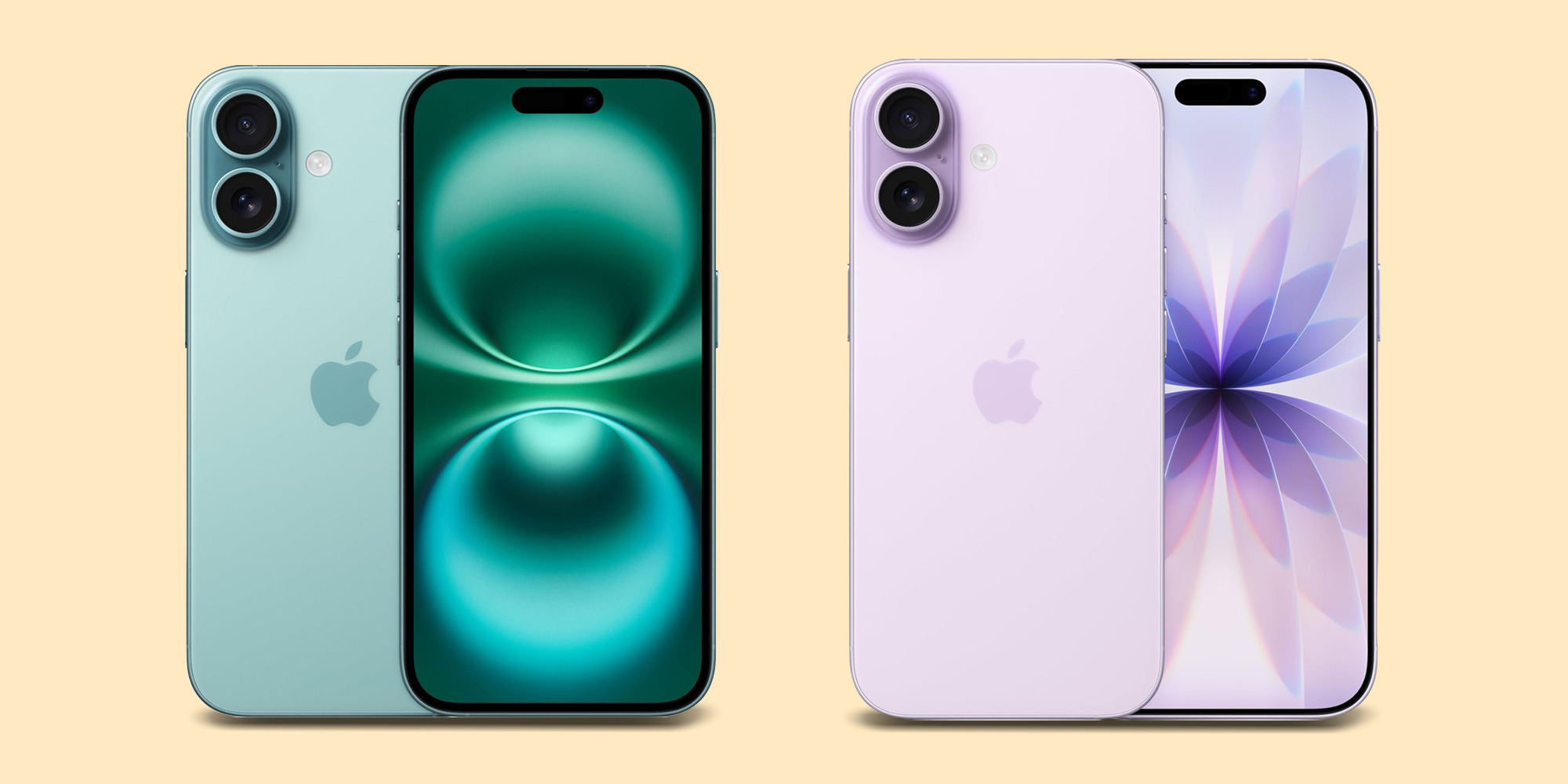Top rated
Top rated
Digital £8.99 per month, cancel any time.
By clicking a retailer link you consent to third-party cookies that track your onward journey. This enables W? to receive an affiliate commission if you make a purchase, which supports our mission to be the UK's consumer champion.

Compare two of Apple's most popular smartphones to see what they have in common, and which features stand out.
Digital £8.99 per month, cancel any time.
Digital £8.99 per month, cancel any time.
Prefer to spread the cost? Check contract deals on the iPhone 16 and iPhone 17.
Adam Speight, Which? mobile phones expert, says:

'We like the iPhone 17's super-smooth ProMotion display, its more versatile cameras, and the convenience of faster charging, but these upgrades come at a cost to battery life, which is a big enough drawback to stop us from outright favouring it over the 16. The headline features for the iPhone 17 are quality-of-life upgrades, but the shorter battery life is a disappointing step backwards that can't be ignored.
The 17 is a tempting upgrade with its Pro-level screen, but opting for the 16 will save you some money and, crucially, grant you a more reliable all-day device. For most users, that makes it the smarter buy.'
Which? members can get the verdict from our lab results, and see our full test scores. Already a member? Log in here.
Join Which? to unlock our full test result comparison on this page. Already a member? Log in here.
| iPhone 16 | iPhone 17 | |
| Current prices | SQUIRREL_TEXT_50016616 | SQUIRREL_TEXT_50022507 |
| Security* | ||
| Currently supported | Yes | Yes |
| Estimated security support expiry date | Sep-30 | Sep-32 |
| Estimated minimum remaining security support (years) | 5 | 6 |
| Brand update policy | Apple typically supports phones for a minimum of six years | Apple typically supports phones for a minimum of six years |
| Display | ||
| Screen size | 6.1-inches | 6.3-inches |
| Display resolution | 2556x1179 | 2622x1206 |
| Foldable screen | No | No |
| Photo | ||
| Rear camera | 48, 12 | 48, 48 |
| Front camera | 12 | 18 |
| Autofocus front camera | Yes | Yes |
| Depth camera | Yes | No |
| Time-of-flight lens | No | No |
| Macro lens | No | No |
| Ultra-wide angle | Yes | No |
| Wide angle | Yes | Yes |
| Telephoto | No | No |
| Max video resolution | 4K (2160p) | 4K (2160p) |
| Autofocus | Yes | Yes |
| Power | ||
| Battery size | 3349mAh | 3692mAh |
| Replaceable battery | No | No |
| Wireless charging | Yes | Yes |
| Fast charge | Yes | Yes |
| General | ||
| Internal memory | 128GB | 256GB |
| Available memory | 109GB | 222GB |
| Operating system | iOS | iOS |
| Operating system version (at time of test) | 18.0 | iOS 26.0.1 |
| Sim type | Nano-SIM | Nano-SIM |
| Dual sim | Yes | Yes |
| Height | 148mm | 150mm |
| Width | 72mm | 72mm |
| Depth | 7.8mm | 8mm |
| Weight | 171g | 177g |
| Manufacturer guarantee | 1 year | 1 year |
| Connections | ||
| Card slot | No | No |
| 4G | Yes | Yes |
| 5G | Yes | Yes |
| NFC | Yes | Yes |
| Headphone socket | USB-C | USB-C |
| Features | ||
| Fingerprint sensor | No | No |
| Face scanner | Yes | Yes |
| Waterproof (IP rating) | IP68 | IP68 |
| FM radio | No | No |
* Currently supported – whether the phone is still supported with important security updates from the manufacturer. Estimated security support expiry date – our estimate for when this phone will no longer be supported, based on typical manufacturer and device-specific support periods. Estimated minimum remaining security support (years) – our estimate of the minimum time left before this phone stops receiving updates. Brand update policy – the brand's official update policy, or our knowledge of how long similar phones have been supported.
Our reviews of the iPhone 16 and iPhone 17 are different – we don't rate phones based on individual experience, but based on the ratings and results we receive from our independent lab, where phones are tested under identical conditions using cutting edge equipment, which means they're all directly comparable. We also purchase every phone we test ourselves, so you can trust that there is no bias in our scores.
At Which? we’re 100% editorially independent and work entirely on behalf of the consumers.